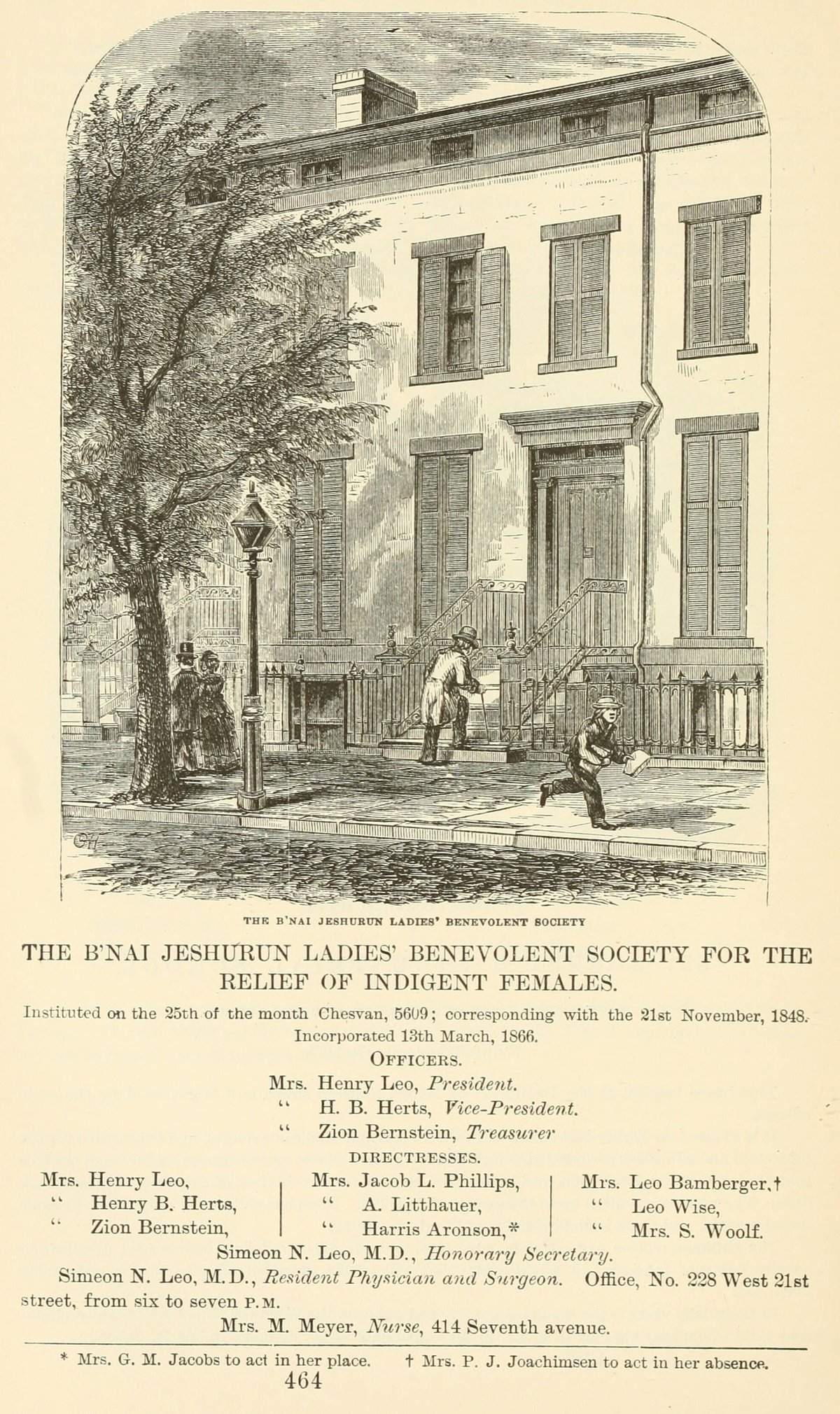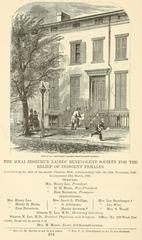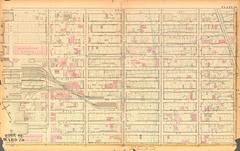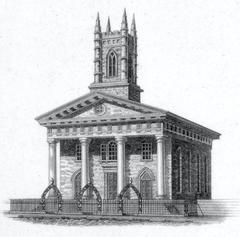
B’nai Jeshurun Visiting Hours, Tickets, and New York City Historical Sites Guide
Date: 14/06/2025
Introduction
B’nai Jeshurun (BJ), located in Manhattan’s Upper West Side, stands as one of New York City’s most historic and vibrant Jewish congregations. Founded in 1825, BJ has played a pivotal role in the evolution of American Judaism, renowned for its architectural splendor, innovative worship, and commitment to social justice. As both a spiritual center and a living historical site, BJ offers visitors a unique opportunity to experience nearly two centuries of Jewish heritage, cultural innovation, and architectural achievement in the heart of New York City.
This comprehensive guide presents everything you need to plan your visit to B’nai Jeshurun, including up-to-date visiting hours, ticketing policies, accessibility options, and tips for exploring nearby attractions. You’ll also find detailed historical insights, architectural highlights, and information about the congregation’s influential leadership and cultural impact.
For the latest information, event schedules, and virtual resources, always consult the official B’nai Jeshurun website and the Jewish Telegraphic Agency archives.
Quick Contents
- Introduction
- Visiting B’nai Jeshurun: Practical Information
- Location, Hours, and Admission
- Accessibility
- Guided Tours, Photography, and Etiquette
- Transportation and Nearby Attractions
- Historical and Architectural Highlights
- Community, Worship, and Cultural Significance
- Frequently Asked Questions (FAQ)
- Summary and Visitor Recommendations
- Sources and Further Reading
Visiting B’nai Jeshurun: Practical Information
Location and Getting There
B’nai Jeshurun is situated at 257 West 88th Street, between Broadway and West End Avenue, on Manhattan’s Upper West Side. The synagogue is easily accessible via subway (1, 2, and 3 lines at 86th Street) and several MTA bus routes. Due to limited street parking, use of public transportation or nearby parking garages is strongly recommended (B’nai Jeshurun Directions).
Visiting Hours
- Services:
- Friday evenings (Kabbalat Shabbat)
- Saturday mornings (Shabbat services)
- Jewish holidays and special events
- Administrative Visits:
- Monday–Thursday: 9:00 AM–5:00 PM
- Friday: 9:00 AM–3:00 PM
- For up-to-date schedules and holiday visiting hours, check the official calendar.
Tickets and Admission
- General Admission:
- Free for regular worship services and most community events.
- Special Events:
- Advance registration or tickets may be required for concerts, lectures, or high holiday services.
- Always consult the BJ event calendar for ticketing and RSVP information.
Accessibility
B’nai Jeshurun is fully committed to accessibility:
- Wheelchair ramps and elevators serve all public areas.
- Accessible restrooms and assistive listening devices are available.
- Large-print prayer books and headsets for the hearing-impaired can be requested.
- Service animals are welcome.
- Contact the synagogue in advance for specific accommodation needs (B’nai Jeshurun Inclusion).
Guided Tours and Photography
- Guided Tours:
- Available by advance arrangement for individuals, groups, or schools.
- Tours highlight BJ’s history, architecture, and community impact (B’nai Jeshurun Group Visits).
- Photography:
- Prohibited during services, Shabbat, and Jewish holidays.
- Permitted during tours or special events with staff approval.
- Always ask staff before taking photos inside the building.
Dress Code and Visitor Etiquette
- Dress respectfully: Business casual or more formal attire is recommended.
- Head coverings: Men are encouraged to wear a kippah (available at the entrance); women may choose to cover their heads.
- Electronic devices: Silence all devices and avoid use during services.
- Arrival: Arrive 15 minutes early to allow for security screening.
Safety and Security
B’nai Jeshurun maintains robust security:
- Security personnel, bag checks, and ID verification are standard (B’nai Jeshurun Security).
- Emergency exits are clearly marked; staff are trained for safety procedures.
Nearby Attractions
Make the most of your visit by exploring the Upper West Side’s cultural gems:
- American Museum of Natural History (AMNH)
- Central Park
- Riverside Park
- Lincoln Center for the Performing Arts
- Numerous cafes, kosher and vegetarian restaurants, and boutiques along Broadway and Amsterdam Avenue.
Historical and Architectural Highlights
Founding and Early Years (1825–1850s)
- Origins: Founded in 1825, BJ was the first Ashkenazi congregation in New York City, established by members seeking a German and Polish minhag, distinct from the Sephardic ritual at Shearith Israel (Wikipedia, BJ History).
- Migration: As the Jewish community moved northward, BJ relocated multiple times, mirroring the city’s growth—from Elm and Greene Streets to 34th Street and later Madison Avenue (JTA Archive).
Growth, Leadership, and Social Impact (1850s–1917)
- Expansion: BJ’s growth led to the founding of other congregations such as Ansche Chesed.
- Community Role: The congregation supported Jewish education, social welfare, and helped establish schools and hospitals (JTA Archive).
Current Sanctuary and Architectural Legacy (1917–Present)
- Sanctuary: The present building, completed in 1917, is a Romanesque Revival landmark designed by Henry B. Herts and Walter S. Schneider.
- Features include a grand entryway, rose window, twin towers, barrel-vaulted ceiling, and vibrant stained-glass windows (NYC Landmarks Preservation Commission).
- Community Center: An adjacent six-story Community House (added in 1929) hosts educational and cultural programs (Daytonian in Manhattan).
- Preservation: Recent renovations have restored decorative elements, upgraded accessibility, and modernized infrastructure (Bromley Caldari).
Community, Worship, and Cultural Significance
Spiritual Life and Innovation
- Worship: BJ is celebrated for spiritually vibrant, musically rich services, blending traditional liturgy with contemporary melodies and global Jewish influences (The New York Times).
- Inclusivity: The congregation is independent and egalitarian, welcoming Jews of all backgrounds, interfaith families, and LGBTQ+ individuals (BJ: What We Believe).
- Hybrid Services: BJ offers both in-person and online worship experiences, ensuring accessibility for all (BJ: Service Schedule).
Education and Social Justice
- Educational Programs: BJ provides diverse learning opportunities for all ages, from Torah study and adult education to family and youth programs (BJ: Shabbaton).
- Social Justice: The synagogue is a leader in advocacy, addressing immigration, racial justice, and climate change (B’nai Jeshurun Social Justice). Community service and interfaith partnerships are integral to BJ’s mission.
Leadership and Legacy
- Notable Rabbis: Influential leaders like Rabbi Israel Goldstein and Rabbi Marshall T. Meyer have shaped BJ’s progressive character and global reach (BJ History).
- Recent Milestones: In 2021, Rabbi Felicia Sol became the first woman appointed as senior rabbi, reflecting BJ’s commitment to evolving leadership (JTA).
Frequently Asked Questions (FAQ)
Q: What are B’nai Jeshurun’s visiting hours?
A: Open for public services on Friday evenings, Saturday mornings, and holidays; administrative hours are Monday–Thursday, 9:00 AM–5:00 PM, Friday until 3:00 PM. Always confirm with the BJ calendar.
Q: Do I need a ticket to attend services?
A: Regular services are free and ticketless; some special events or holidays require advance registration or tickets.
Q: Is B’nai Jeshurun wheelchair accessible?
A: Yes. Ramps, elevators, accessible restrooms, and assistive devices are available (B’nai Jeshurun Inclusion).
Q: Can I take photos inside the synagogue?
A: Photography is not permitted during services and holidays, but may be allowed during tours with prior approval.
Q: Are guided tours available?
A: Yes, by advance request (B’nai Jeshurun Group Visits).
Q: Are service animals welcome?
A: Yes, service animals are permitted.
Q: What should I wear when visiting?
A: Dress respectfully; head coverings are available at the entrance.
Summary and Visitor Recommendations
B’nai Jeshurun embodies the story of American Judaism—migration, resilience, innovation, and community. Visitors are invited to experience its beautiful Romanesque architecture, dynamic worship, and vibrant community life. Whether attending a renowned Friday night service, participating in educational or social justice programs, or exploring the historic sanctuary, BJ offers a living connection to New York City’s Jewish and cultural heritage.
Visitor Tips:
- Check the BJ calendar before your visit.
- Arrive early for security screening and seating.
- Respect traditions and dress codes.
- Explore nearby museums and parks to enrich your trip.
For the best experience, download the Audiala app for guided tours, updates, and audio content about BJ and other NYC landmarks.
Sources and Further Reading
- B’nai Jeshurun official website
- Jewish Telegraphic Agency Archive – B’nai Jeshurun history
- Wikipedia: B’nai Jeshurun (Manhattan)
- JTA: B’nai Jeshurun 200th anniversary
- Bromley Caldari: B’nai Jeshurun Renovation Project
- Daytonian in Manhattan: The B’nai Jeshurun Community Center
- Chamber of Commerce: BJ Profile
- NYC Landmarks Preservation Commission: B’nai Jeshurun Report
- The New York Times: Vibrant Services at BJ
For additional resources on New York Jewish heritage and city historical sites, explore related articles on our website. Download the Audiala app for digital tours and real-time updates. Follow Audiala on social media for news and event highlights.

























































































































































































































































































